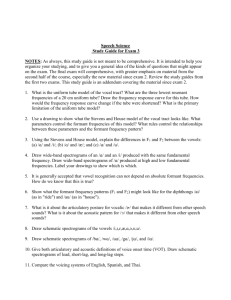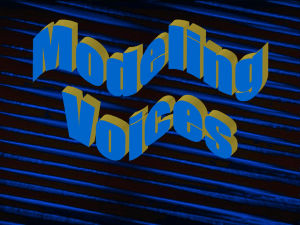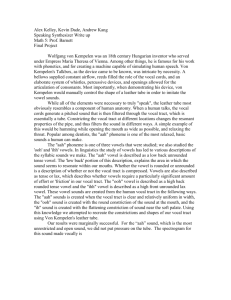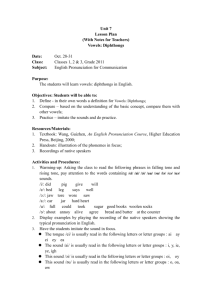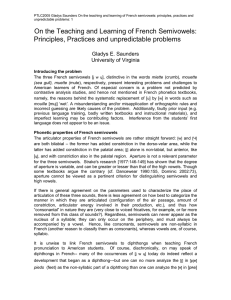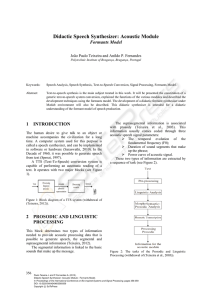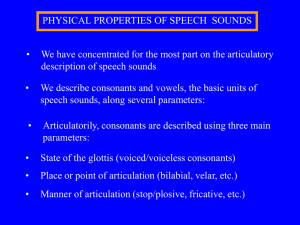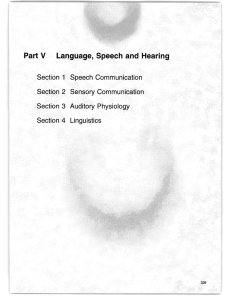Static Vowels * Diphthongs * Semivowels * Stops
advertisement
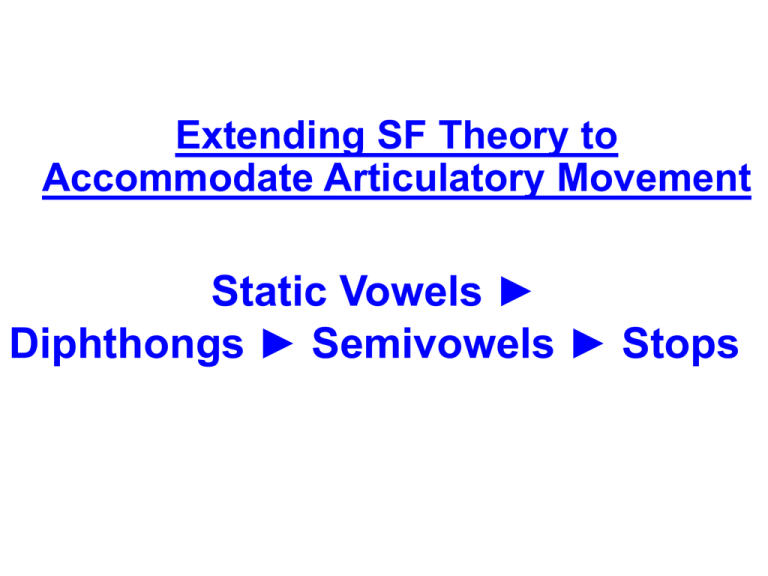
Extending SF Theory to Accommodate Articulatory Movement Static Vowels ► Diphthongs ► Semivowels ► Stops [ɑ] [i] [u] This shows the formant patterns for 3 static vowels. English has 3 diphthongs (nonstatic) that include these vowel qualities: [ai] (buy), [au] (bow), and [oi] (boy). (You may have learned different ways to transcribe these sounds; don’t worry about it.) What patterns would you expect for [ai], [au], and [oi]? natural [ai] [au] [oi] synthetic The principle is straightforward: to get [ai], you start around [A] and transition into something around [i]. Same idea with [au] and [oi]. These dynamic changes in formants are called formant transitions. They’re a very big deal – for vowels and for consonants. natural [ai] [au] [ɔi] synthetic The synthetic copies here are purposely cartoonish – I connected the formants for the 1st vowel to those of the 2nd vowel with straight lines. The ear doesn’t seem to be real fussy about the fine details. Ok, let’s review what we’re trying to do here – how do we extend the simple (and very limiting) static SF model we’ve been working with to a dynamic SF model that we need to understand how actual speech works. At this point we’ve extended a static vowel model to a dynamic vowel model. It may not seem like we’ve gone that far, but we have – all the rest of the steps will look very similar. Next steps: 1. Push the dynamic vowel idea to the most vowel-like consonants: semivowels (glides). 2. Push the semivowel idea to the least vowel-like consonants: stops. [uA] [wA] [bA] [iA] [jA] [gA] [uA] [iA] [wA] [jA] [bA] [gA] Going left to right, the sound category (manner class) is changing – diphthong ► semivowel ► stop. What is the articulatory feature that distinguishes these three manner class categories? What is the acoustic feature that distinguishes these three manner class categories? [uɑ] [iɑ] [wɑ] [jɑ] [bɑ] [gɑ] Articulatory difference: speed of articulatory movement – diphthongs: slow movements; semivowels: medium speed; stops: very fast. Acoustic difference: formant transition duration – diphthongs: long transitions; semivowels: mediumlength transitions; stops: very short transitons. [uA] [iA] [wA] [jA] [bA] [gA] One quick point before we move to the next question: These articulatory and acoustic facts have to be connected in this way. Articulation controls sound: if the articulators move slowly, the formants have no choice but to change slowly; if the articulators move quickly, the formants have no choice but to move quickly. [uA] [iA] [wA] [jA] [bA] [gA] Comparing top to bottom ([uA] vs [iA], [wA] vs. [jA], etc.), the sounds differ in the starting articulatory configuration. Top row is simple: They’re all labial sounds. Bottom row not quite so simple, but they all start with a high tongue position, then move to [A]. For simplicity, we’re going to call the top-bottom difference place of articulation. [uA] [iA] [wA] [jA] [bA] [gA] Ok, we’re going to characterize differences between [u]-[i], [w]-[j], and [b]-[w] as place of articulation. The terminology is a slight stretch, but conceptually it works fine. Top row: labials, bottom row: we’ll call these “palatals” for convenience. Now the question: What acoustic information conveys these “place” differences to the listener? [uA] [iA] [wA] [jA] [bA] [gA] Two possibilities can be ruled out: (1) F1 rises for both “places”; that can’t be it. (2) F3 slants downward for the “palatals”; that could be it, but it’s not. Just trust me. What’s left? Bottom line: This particular manner class difference (diphthongs vs. semivowels vs. stops) is conveyed by differences in formant transition duration (due to differences in the speed of articulatory movement). Differences in place of articulation are conveyed by differences in the trajectory of F2 (and sometimes F3) transitions.
